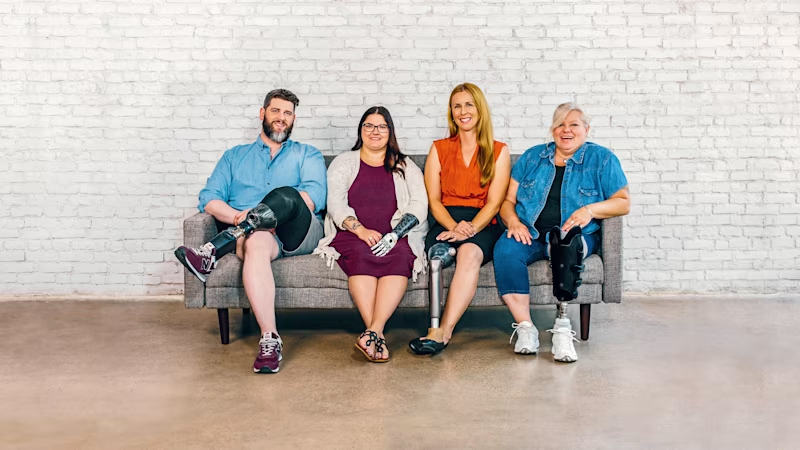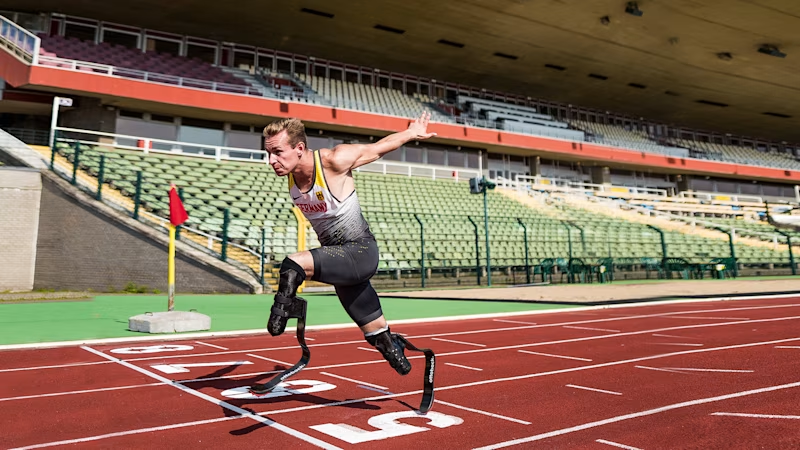Michelangelo hand
The Michelangelo hand is part of the unique and streamlined AxonBus system. Lightweight, powerful, and fast, the Michelangelo hand aims to restore numerous functions of the natural hand in a sophisticated and intelligent design.
The Michelangelo hand is part of the unique and streamlined AxonBus system. Lightweight, powerful, and fast, the Michelangelo hand aims to restore numerous functions of the natural hand in a sophisticated and intelligent design.
User group: | women, men, adults, mature adults |
Product family: | Michelangelo Axon Bus |
Colour: | White |
Michelangelo – versatile and sophisticated
The Michelangelo hand has four movable fingers and a powered thumb that can be positioned separately using muscle signals. Seven functional, naturally designed hand positions are available, each delivered with speed and strength.
A collection of world-class product developers designed the Michelangelo hand to resemble and feel as close to a natural hand as possible. The fingers are detailed and made of both soft and hard materials. The unique, flat, oval wrist joint also flexes and extends like a natural wrist joint. Prosthetic gloves in multiple colors provide a variety of options for personal expression.
Suitable for everyday use, the prosthetic gloves have a multilayer structure and come in six shades. Colored fibers on the inside simulate the natural vein structure of the human hand. Lamella, integrated into the hand shells, lend a natural appearance to the movement of the wrist and thumb. A translucent and a black prosthetic glove are available for those who want to show off their modern prosthesis. On top of this, Axonskin Black and AxonSkin Silicone cover options are also available.
Grasping without thinking twice
Markus from Austria
Markus shows us how he works. He shares some insights into his family life with the Michelangelo hand prosthesis. He discusses important situations in his life and how he manages with the prosthesis.
Grasping without thinking twice
Aisha is 18 years old and looking forward to getting a job and her own place to live. With the Michelangelo hand, she will be able to lead an active life. Grasping without thinking twice has never been so easy.
Sjaak and his family
Hear about Sjaak and his family on their experience with the Michelangelo hand.
Variability and gripping force
Seven different grips
Very few parts of the human body are as complex as our hands. Only the perfect interplay between nerves, sinews, a total of 27 bones, 39 muscles, and 36 joints makes it possible for us to carry out everyday activities. One of the greatest challenges faced by medical technology is using prostheses to model as many of these numerous functions as possible. With its seven different gripping possibilities, the Michelangelo hand restores numerous functions of the natural hand. Its gripping force is between 13 lbs (6 kg) and 15lbs (7 kg). You can adjust and control the force needed to hold a heavy or light object with the Michelangelo hand.
Lateral pinch
With a lateral pinch, also known as a key grip, the thumb moves laterally to the index finger. This allows you to laterally grip flat objects such as paper or credit cards.
Lateral power grip
The thumb moves laterally to the index finger. This allows you to also grip medium-sized objects such as a mobile phone.
Finger abduction/adduction
By spreading and closing the fingers, you can hold flat and thin (< 3 mm) objects such as dollar bills.
Tripod pinch
With the so-called pinch grip, the thumb, middle finger, and index finger form a three-point support to securely hold small objects such as a pen.
Opposition power grip
The large opening width of the hand allows you to securely hold objects with a larger diameter.
Open palm
With an open palm, a flat hand position is achieved which allows you to carry, for example, a plate or documents quite naturally.
Natural mode
The Michelangelo hand looks very natural in the resting position. In flexible mode, the wrist yields slightly when counter-pressure is applied.
When you relax the muscles, the Michelangelo hand also assumes a natural, relaxed hand position.
The right prosthesis training helps with its practical use
A good fitting doesn't end once a prosthesis has been professionally adjusted. The better you know your new Michelangelo hand, the more efficiently you can use it in everyday life. This is why Ottobock has developed accompanying practical exercises to familiarise you with the prosthetic hand – so you can reap the full benefits of the numerous functions and gripping options of the Michelangelo hand. Ideally, a specially trained therapist will support you as you work through the multi-level training concept. The contents include information on the daily handling of the prosthesis such as charging the battery, care instructions, storage or switching the prosthesis on and off. This is followed by exercises for learning the different grip options. In addition to the training with your therapist, there is also a DVD which allows you to repeat and familiarise yourself with the exercises at home.
Product information
| User group | women, men, adults, mature adults |
|---|---|
| Product family | Michelangelo Axon Bus |
| Colour | White |
| Product type | AxonTerminal devices |
Product Data
| Article number | 8E500=L-M | 8E500=R-M |
|---|---|---|
| Side | left | right |
| Size | 7 3/4 | 7 3/4 |
| User group | women, men, adults, mature adults | women, men, adults, mature adults |





